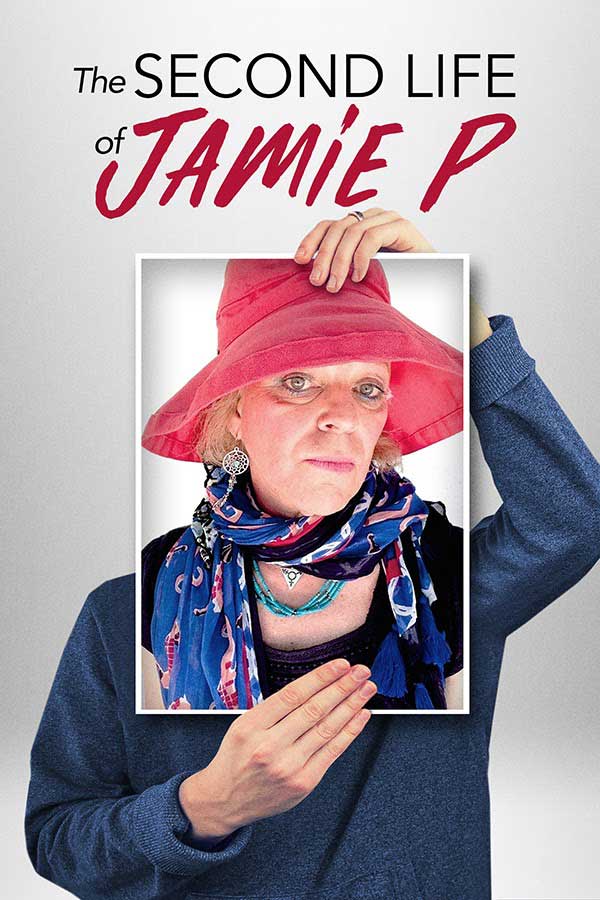The new documentary “The Second Life of Jamie P,” available May 12 on iTunes, Amazon and Google Play, is an up-close and personal profile of the transgender title character.
Jamie Peebles is a 63-year-old transgender woman. Jamie’s family — her ex-wife, Elaine and her two adult daughters — express their feelings as they have a difficult time processing the news. Elaine feels invalidated, and one of Jamie’s daughters was angry that Jamie shared her big announcement via text. Another daughter feels betrayed. These responses, however painful to watch, depict the family’s genuine response.
“The Second Life of Jamie P” educates viewers, both trans and cisgender, on the challenges and struggles she experiences — from her frustration with an anesthesiologist who insists on calling her sir, or the surprising difficulty Jamie had saying goodbye to her penis the night before her gender affirmation surgery, or her using a dilator on her vagina.
There is also a very brief discussion that 40% of transgender folks attempt suicide.
As Jamie is compelled to be her true self, filmmaker Roger Sherman follows her, doggedly, on her journey. There are scenes of Jamie pre- and post-top surgery, where she complains about the pain in her augmented breasts. She endures expensive and painful hair removal treatments for her beard. She wears headscarves to cover up her baldness. In one of the most interesting choices, Sherman takes viewers into the operating room as Jamie has her gender affirmation surgery. That her orchiectomy has complications is an interesting narrative wrinkle, but it leads to several uncomfortable moments — including Jamie experiencing palpable depression — as well as some difficult conversations at follow up medical appointments.
“The Second Life of Jamie P” however, does contain some lighter scenes, as when Jamie describes the thrill of experiencing her first female orgasm, talks about connecting to the genitals she has “wanted since birth” or describes the pleasure she has shopping for or modeling dresses, which make her feel normal.
These anecdotes counterbalance some of the more dramatic episodes in Jamie’s life. As a young person, she experienced genital dysphoria during puberty and injected Novocain to numb her genitalia with a dire consequence. She also experimented with homosexuality in college, only to realize that wasn’t who she was. Here, Jamie raises the feelings of guilt and shame she experienced from repressing her own self-knowledge. These moments do feel something like a breakthrough for the film’s subject.
In fact, as Jamie explains, it was her work as a young person as a fashion and glamour photographer that helped her focus on her feminine needs and live vicariously through the act of dressing up and posing women. This may also explain why she identified strongly with a female avatar while playing the virtual reality game, “Second Life,” that sparked Jamie’s desire to transition.
Sherman’s documentary connects these dots even as it goes in various narrative directions. There is a subplot about Jamie’s relationship with Carol, her trans best friend and “big sister,” who wanted to help Jamie through transitioning. However, Jamie developed strong emotional feelings for Carol that were not reciprocated. Their friendship is in jeopardy after they sleep together. Carol’s story of her own experience transitioning provides an interesting contrast to Jamie’s, but it feels buried, appearing in the last 10 minutes of the film.
Likewise, Jamie’s conflict with her brother Doug, which is also introduced late in the film, feels tacked on.
Better are the discussions about Jamie behaving and dressing like a teenager, and even liking Justin Bieber. This “second puberty” is difficult for Jamie’s children to accept, as is her decision to have cosmetic surgery to recontour her face and have it look more feminine. Jamie begins obviously feels more like herself but also asks, “Will I ever be really me?”
Sherman captures Jamie’s experiences and emotions in all their candor.
